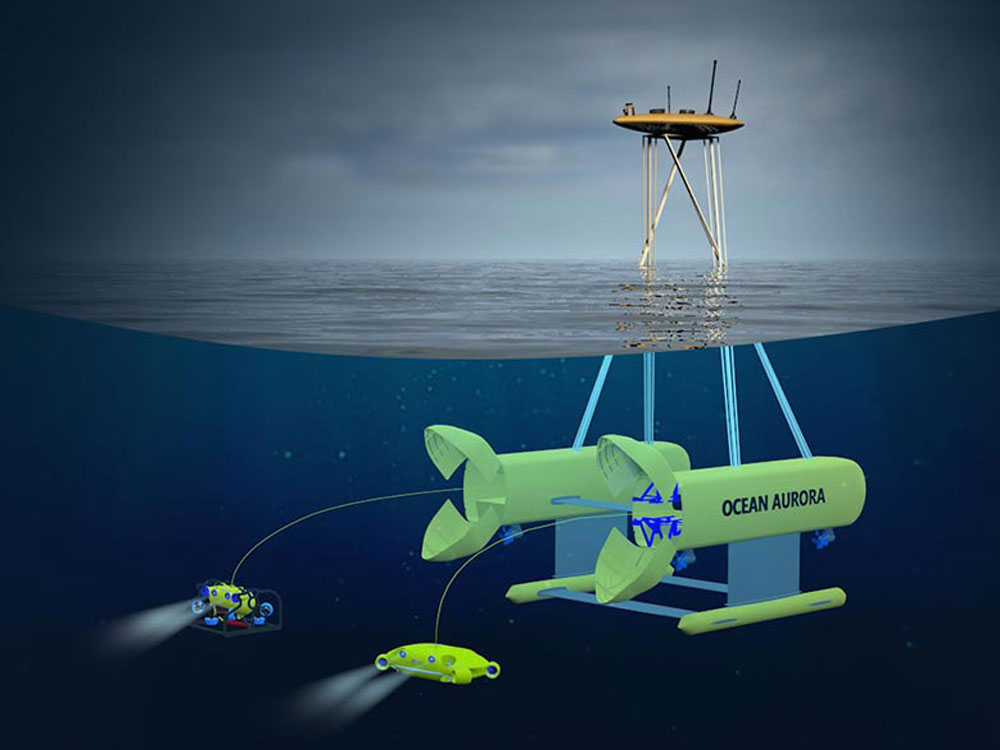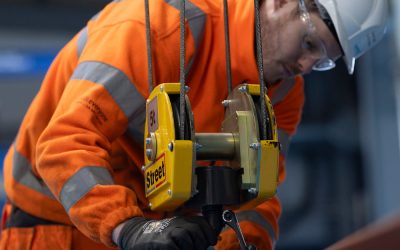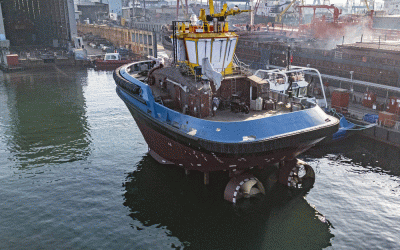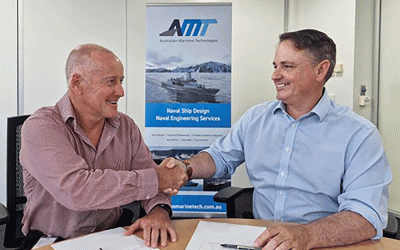If the subsea deployment of ROVs, AUVs and UUVs can reduce Opex and emissions, it makes sense that using an uncrewed vessel to launch and recover these drones could boost operational efficiency even further.
That’s the rationale behind the design of the Ocean Aurora: a remotely operated ‘drone launchpad’ conceived by offshore survey/inspection services provider MCS.
Speaking at the Subsea Expo 2024 show in Aberdeen in February, Alasdair Cowie, business development director at MCS, said that the Ocean Aurora concept could cut costs “by 50% or more”, primarily through “doing away with dependency on manned ROV support vessels [RSVs]”. This saving could prove crucial, Cowie said, given offshore inspectors’ growing need for instant response and schedule independence, and especially so considering that “the days of huge budgets are gone”.
The Ocean Aurora measures 17.5m x 10.18m, weighs 130tonnes, is sea state-7 capable and has an operational displacement of 153tonnes when submerged. Its draught is recorded as 5.5m when operating in surface mode or 11.7m when in submerged mode, and it has been built (at MCS’ facility in Egypt) to support a 4tonne payload. MCS tells Ship & Boat International: “The hull was built in high-strength steel, while some parts, such as the mast and superstructure, are made of aluminium.”
The Ocean Aurora incorporates a diesel-electric powertrain, has an endurance of more than 30 days and uses ballast pumps to control its ascent and descent: when deballasted, the unit descends to 5m beneath the surface. The vessel also utilises VSAT, VHF and/or 4G to stay connected to MCS support teams at remote control rooms in Egypt, Malaysia and the UK, thereby enabling extended and 24/7 surveys.
MCS adds: “The Ocean Aurora is equipped with state-of-the-art sensors, navigation systems and AI algorithms for automatic collision avoidance, target detection and optimum path planning.” The vessel has three working modes – remote control, semi-autonomous and fully autonomous – “all designed to be performed with no need for a mother vessel, while being monitored by the onshore remote operation centre”, MCS says.
The uncrewed RSV can carry, launch and recover two MCS-branded ROVs/AUVs simultaneously. These drones will inevitably include the company’s 850mm x 851mm, semi-autonomous MiniSpector drone. This 45kg model features inbuilt photorealistic 3D cloud (PRC) technology, allowing accurate measurements. Developed mainly for offshore platform/jacket inspections, ultrasonic thickness readings and marine growth removal, the MiniSpector has a payload of 14kg and an 8kW electric propulsive system, and can hold its own in 3knot currents. This mini-ROV also comes with a 300m tether and its own tether management system.
Additionally, the Ocean Aurora will be able to deploy MCS’ ProSpector ROV, typically used for buried pipeline and cable inspections. The ProSpector can descend to 300m at a top speed of 6knots. In the future, Cowie said, the Ocean Aurora will also support MCS’ fully autonomous AutoSpector ROV, which is currently undergoing beta testing. Slated for launch in or by Q1 2026, the AutoSpector will be able to descend to 500m.
The first Ocean Aurora unit has been undergoing sea trials between March and May this year, with deployment scheduled for June. “We’re concentrating on the Middle East and Far East markets, with the first two units expected this year,” Cowie revealed. “Further units will then be built in 2025 and 2026.”




